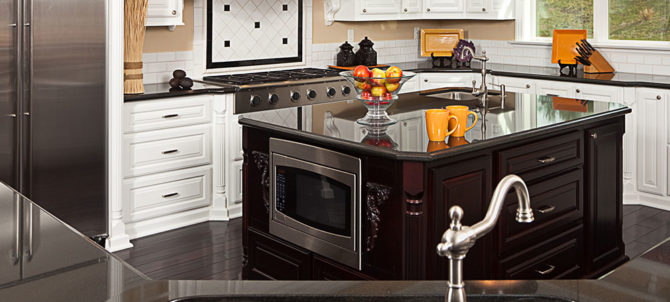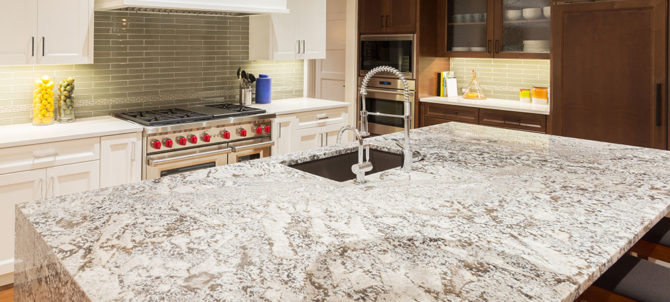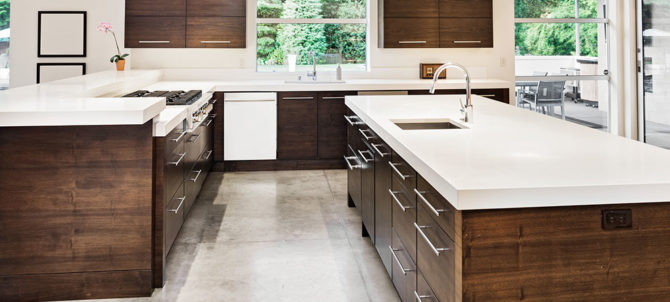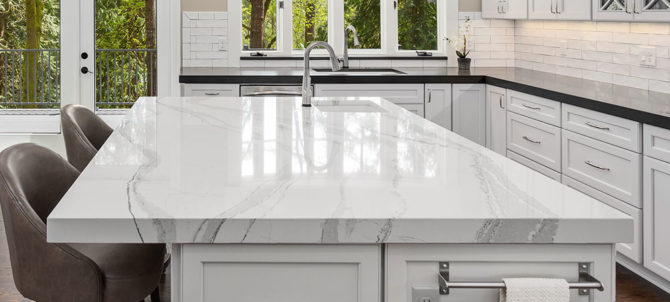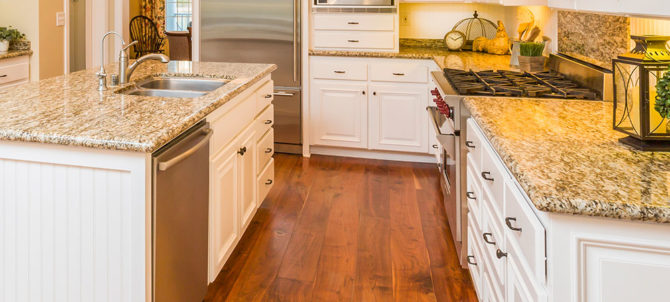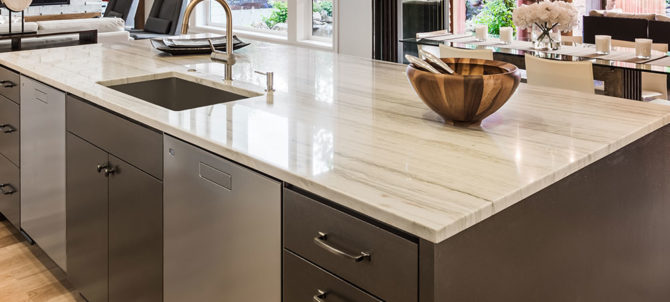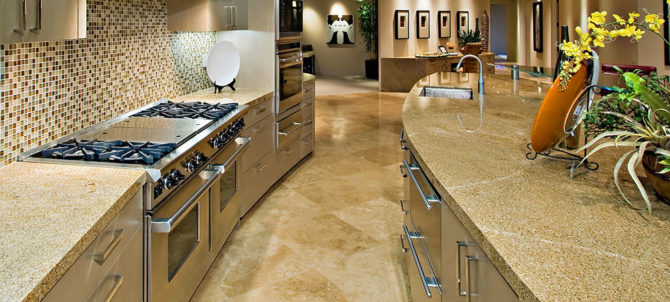
If you’re like millions of homeowners, you’ve undoubtedly seen one or more home renovation shows over the years. These specialists provide helpful, tried-and-true, on-the-job ideas and recommendations for any home improvement project.
New kitchen countertops are up in the home renovation pantheon, replacing a worn-out and faded floor and putting in new patio pavers.
If you’re considering upgrading your kitchen countertops, we’ve compiled the following recommendations and suggestions that can help you in your home improvement journey:
Paint the countertops
Painting your countertop is a cost-effective way to transform it dramatically. With the correct paint and technique, you can freshen your countertop and the entire kitchen for a fraction of the cost.
Epoxy paint is an excellent choice because of its longevity and high-gloss finish, and you can select almost any hue to complement the rest of your kitchen.
Before painting, clean and lightly sand the surface to ensure that the paint adheres properly and uniformly. Choose a solid color, or have fun with stenciled patterns and decorations.
You should note that non-porous materials such as granite, marble, quartz, and solid-surface counters are not recommended since paint does not stick well.
Install a backsplash
Many people overlook a kitchen’s backsplash area, yet this seemingly insignificant strip of wall running along the countertop surface may be precious real estate when replacing your kitchen cabinets.
Choosing a glazed ceramic tile backsplash will offer a visual flair to your new kitchen design.
It’s also easy to clean. If you’ve chosen a more natural, muted tone for your countertop, the backsplash is another area where you can experiment with color and style to make your kitchen stand out – and it’s a pretty simple design feature to change up occasionally.
Polish the surfaces
Polishing is a simple and quick upgrade that can make a big difference. Polishing your granite or marble countertop will bring back its natural luster and beauty. Additionally, polishing can remove minor scratches and restore its original appearance.
A proper polish makes it easy to clean and maintain by preventing dirt accumulation and everyday wear. You can pay experts to conduct the work or use a polishing kit.
In any case, you can maintain a clean and modern kitchen by routinely wiping your counters.
Add some greenery and vases.
A modest or large kitchen can be made more lively by adding fresh greenery in vases. Herbs are helpful to have on hand when cooking and add a pleasant appearance. Additional plants, such as flowers and succulents, can color the area.
A modern vase with flowers or a little plant makes everything feel better.” “Fake or fresh—it makes no difference. It gives your kitchen counter additional vitality and depth.
To add color to the room, consider arranging fresh flowers in chic vases, succulents, or little potted plants. Your kitchen will feel livelier and more inviting with this bit of addition.
And the beauty is that all these pieces are cheap and give your countertops a new look.
Add new décor
A straightforward idea that can significantly impact your countertops is updating the décor of your kitchen.
Decoration can be both beautiful and functional when done right. Large bowls for holding fruits and vegetables and a tasteful vase repurposed as a utensil holder add charm and function to your surfaces.
For a great look, use a large tray or vintage-inspired riser to display candles, vegetables, or fruits, stacked cookbooks, or a combination of the three to provide beauty and function.
Edge your surfaces
Although it may seem like a bit of detail, the edge you decide on for your finished countertop has a significant impact. Edging gives your projects the ideal finishing touch and expresses your preferences and sense of style.
Remember never to undervalue this finishing touch, regardless of your style.
Put some style into it.
Choose your sink creatively. There are numerous options for your new sink, ranging from industrial chic to traditional farmhouse:
Contemporary styles
Seamless sinks
Integrated prep boards, drain trays, and several work areas
Selecting the ideal sink will genuinely make your countertop makeover come together.
Replace the cabinet hardware.
Other fixtures in your kitchen might occasionally improve the appearance of your countertop and significantly influence the overall style of the space.
Brass hardware fixtures are a beautiful, timeless choice that only improves with age.
Replace outdated handles and knobs with brass ones to create a chic, sophisticated look. Brass fittings are a flexible option for any kitchen decor since they go well with various countertop materials and hues.
Replace the countertop material.
If you don’t like the current countertop material, there is no harm in replacing it. All you need to do is be acquainted with the wide variety of materials currently on the market. Marble, granite, quartz, and soapstone are all highly popular affordable options.
To ensure you get the most out of your investment, the challenge is choosing a material that complements your home’s style and price range in addition to your budget.
When upgrading your kitchen countertops, consider the upkeep required, such as daily cleaning whether the material requires occasional and/or frequent sealing, as well as how this may affect your lifestyle.
For an easier time, work with experienced countertop replacement NC professionals who will help you understand the pros and cons of each unit and the right ones you should go for.
Parting shot
There is a lot to consider when embarking on the costly and challenging task of replacing your old kitchen countertops with new materials and patterns. It’s a significant step, and you want to make the proper choices, so we hope you found these pro suggestions helpful and enlightening.
If you’re considering upgrading your kitchen countertops, contact professionals who will ensure a stress-free experience.
